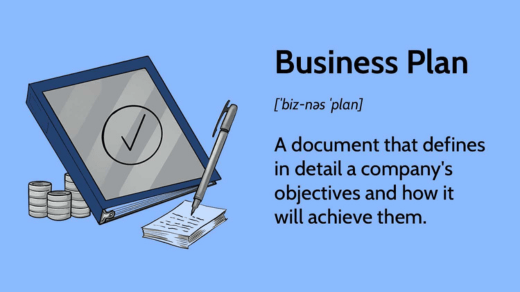A business plan serves as a roadmap for entrepreneurs and business owners, outlining the goals, strategies, and financial projections for their venture. It provides a comprehensive overview of the business, its operations, and how it plans to achieve success. In this article, we will delve into the concept of a business plan, its importance, and the key components that make it an essential tool for any aspiring or existing business.
What is a Business Plan?
At its core, a business plan is a written document that describes the fundamental aspects of a business, including its mission, vision, target market, products or services, marketing strategies, financial projections, and operational structure. It serves as a blueprint that guides the decision-making process and helps ensure alignment between various stakeholders, such as investors, employees, and partners.
Importance of a Business Plan
A well-crafted business plan is crucial for several reasons. Firstly, it provides clarity and direction to the business owner, allowing them to set clear objectives and define the path to achieve them. It serves as a reference point that helps in making informed decisions, evaluating progress, and identifying potential areas for improvement. Moreover, a business plan plays a pivotal role in attracting investors and securing financing. It demonstrates the viability and profitability of the business, instilling confidence in potential stakeholders.
Components of a Business Plan
A comprehensive business plan consists of several key components that provide a holistic view of the business and its operations. Let’s explore these components in detail:
- Executive Summary
The executive summary is a concise overview of the entire business plan. It encapsulates the essence of the business, including its mission, target market, unique selling proposition, and financial highlights. This section should be compelling and engaging to capture the reader’s attention and generate interest in the venture.
- Company Overview
The company overview section provides detailed information about the business, including its legal structure, ownership, history, and location. It also highlights the key personnel and their roles within the organization.
- Market Analysis
A thorough market analysis is essential to understand the industry landscape, target market segments, and customer preferences. This section includes data on market size, growth trends, competition, and potential opportunities. It helps businesses identify their unique value proposition and differentiate themselves from competitors.
- Competitive Analysis
In this section, businesses assess their direct and indirect competitors, analyzing their strengths, weaknesses, and market positioning. Understanding the competitive landscape enables businesses to develop effective strategies to gain a competitive edge.
- Products and Services
Here, businesses describe their offerings in detail, highlighting the key features, benefits, and competitive advantages. This section should showcase how the products or services address customer needs and provide value.
- Marketing and Sales Strategy
The marketing and sales strategy outlines how the business plans to attract and retain customers. It includes the marketing channels, promotional tactics, pricing strategies, and sales forecasts. This section demonstrates the business’s ability to generate revenue and achieve profitability.
- Organizational Structure
The organizational structure section defines the roles, responsibilities, and reporting relationships within the company. It highlights the key personnel and their qualifications, emphasizing the management team’s expertise.
- Financial Projections and Analysis
Financial projections provide a comprehensive outlook on the business’s financial performance, including revenue, expenses, and profitability over a specific period. It includes income statements, balance sheets, and cash flow forecasts. Investors and lenders closely examine this section to assess the business’s financial feasibility and potential return on investment.
- Risk Assessment and Mitigation Strategies
Identifying potential risks and developing strategies to mitigate them is crucial for business sustainability. This section outlines the risks associated with the business, such as market volatility, regulatory changes, or operational challenges, and proposes contingency plans to manage them effectively.
- Implementation Plan
The implementation plan describes the step-by-step actions required to turn the business plan into reality. It includes timelines, milestones, and key performance indicators (KPIs) to measure progress and success.
A business plan is a vital tool that provides a roadmap for entrepreneurs to navigate the challenges and opportunities of running a successful business. It serves as a guiding document that aligns stakeholders, attracts investors, and ensures the business stays on track towards its goals. By understanding the key components and importance of a business plan, entrepreneurs can enhance their chances of success and make informed decisions to drive growth.





